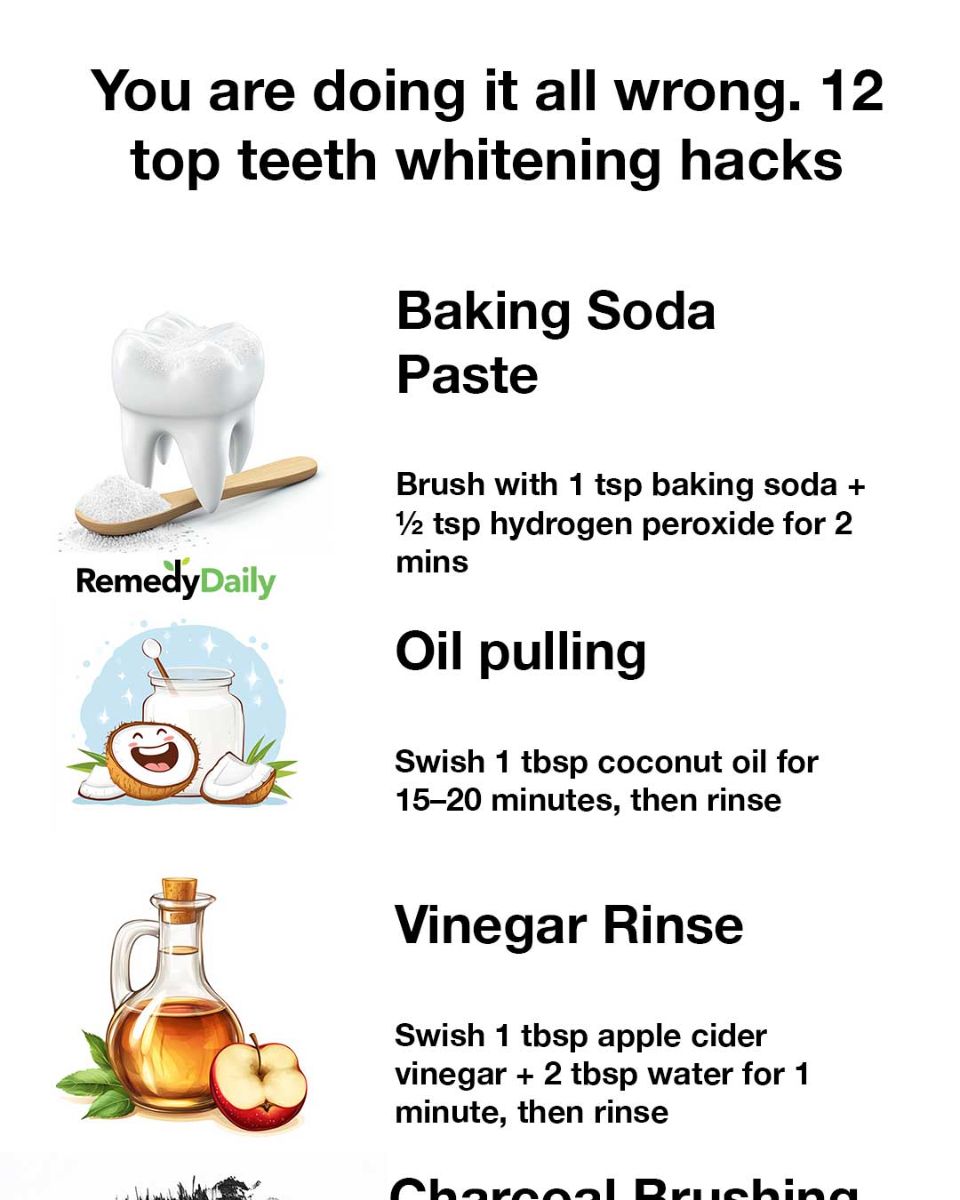You are doing it all wrong. 12 top teeth whitening hacks
Georgia Lynn
Contributing Writer
In today’s world, a bright, white smile is often seen as a symbol of health and beauty. However, many people struggle with teeth discoloration due to various factors such as diet, lifestyle, and genetics. While there are numerous products and treatments available, not all are effective or safe. This article explores 12 top teeth whitening hacks that can help you achieve a dazzling smile without breaking the bank or compromising your oral health.
Understanding the Basics of Teeth Whitening
Teeth whitening involves the use of substances to remove stains and discoloration from the surface of the teeth. The most common causes of teeth discoloration include consumption of staining foods and drinks, smoking, and poor oral hygiene. Understanding the underlying causes of discoloration can help you choose the most effective whitening method for your needs.
The Importance of Oral Hygiene in Teeth Whitening
Maintaining good oral hygiene is crucial for achieving and maintaining white teeth. Regular brushing and flossing help remove plaque and prevent the buildup of stains. Additionally, using a fluoride toothpaste can strengthen enamel and protect against cavities, which can contribute to discoloration. Consistent oral care is the foundation of any successful teeth whitening regimen.
1. Baking Soda and Hydrogen Peroxide Paste
Baking soda is a mild abrasive that can help scrub away surface stains on teeth. When combined with hydrogen peroxide, a natural bleaching agent, it can effectively whiten teeth. To use this method, mix a small amount of baking soda with hydrogen peroxide to form a paste, and brush your teeth with it for two minutes. Rinse thoroughly and use this method sparingly to avoid damaging enamel.
2. Oil Pulling with Coconut Oil
Oil pulling is an ancient practice that involves swishing oil in your mouth to remove bacteria and promote oral health. Coconut oil is popular for this method due to its pleasant taste and antimicrobial properties. Swish a tablespoon of coconut oil in your mouth for 15-20 minutes, then spit it out and rinse with water. Regular oil pulling can help reduce plaque and improve the appearance of your teeth over time.
3. Apple Cider Vinegar Rinse
Apple cider vinegar is known for its natural whitening properties due to its acidity. To use it as a rinse, dilute one part apple cider vinegar with two parts water and swish it in your mouth for about a minute. Rinse thoroughly with water afterward to prevent enamel erosion. Use this method sparingly, as excessive use can damage tooth enamel.
4. Activated Charcoal Brushing
Activated charcoal is a popular natural remedy for teeth whitening. It works by absorbing plaque and surface stains. To use, wet your toothbrush and dip it into powdered activated charcoal. Brush your teeth gently for two minutes, then rinse thoroughly. Be cautious with this method, as charcoal can be abrasive and may damage enamel if used too frequently.
5. Whitening Strips and Gels
Over-the-counter whitening strips and gels are convenient options for at-home teeth whitening. These products contain peroxide-based bleaching agents that help remove stains. Follow the instructions carefully to avoid gum irritation or tooth sensitivity. Results can vary, but many people see noticeable improvements after a few weeks of consistent use.
6. Professional Whitening Treatments
For those seeking dramatic results, professional whitening treatments performed by a dentist are highly effective. These treatments use stronger bleaching agents and often involve the use of laser or light to enhance the whitening process. While more expensive than at-home options, professional treatments can provide long-lasting results and are tailored to your specific needs.
7. Whitening Toothpaste and Mouthwash
Whitening toothpaste and mouthwash are easy additions to your daily oral care routine. These products contain mild abrasives and chemical agents that help remove surface stains. While they may not provide dramatic results, they can help maintain the whiteness of your teeth when used regularly.
8. Eating Crunchy Fruits and Vegetables
Crunchy fruits and vegetables, such as apples, carrots, and celery, act as natural toothbrushes by scrubbing away plaque and surface stains. Additionally, they increase saliva production, which helps neutralize acids and protect teeth. Incorporating these foods into your diet can support your teeth whitening efforts.
